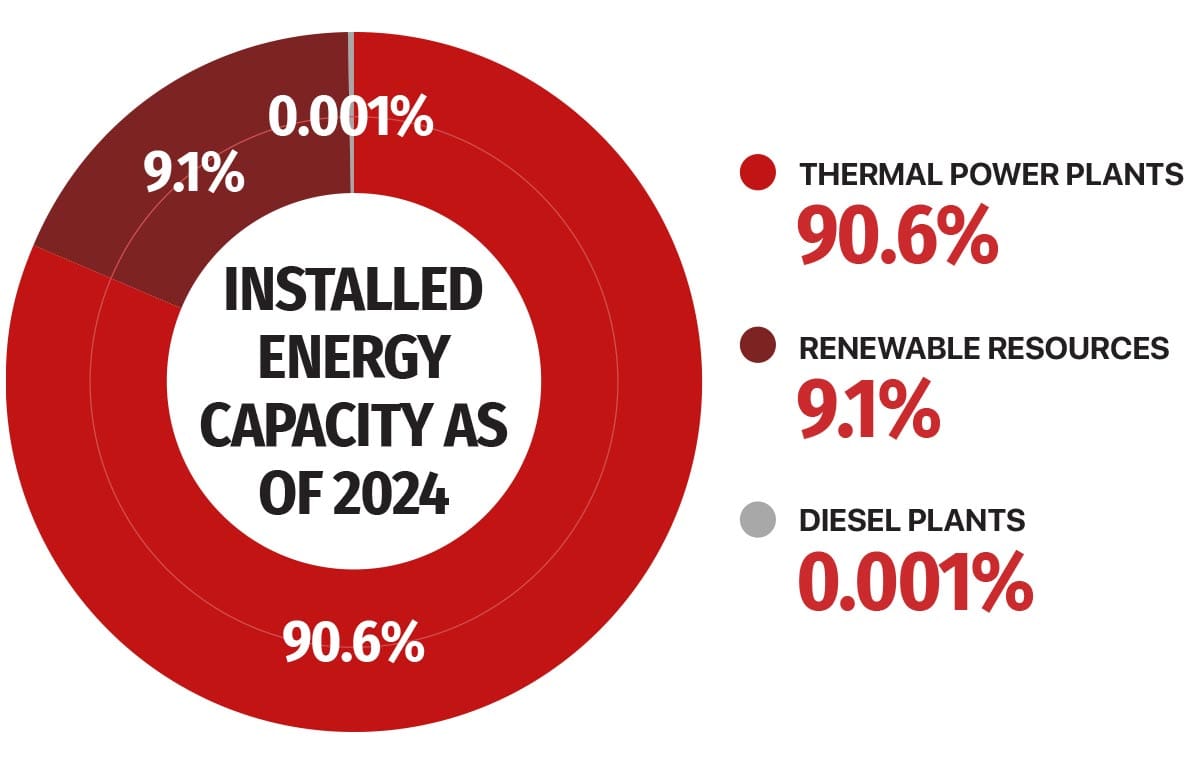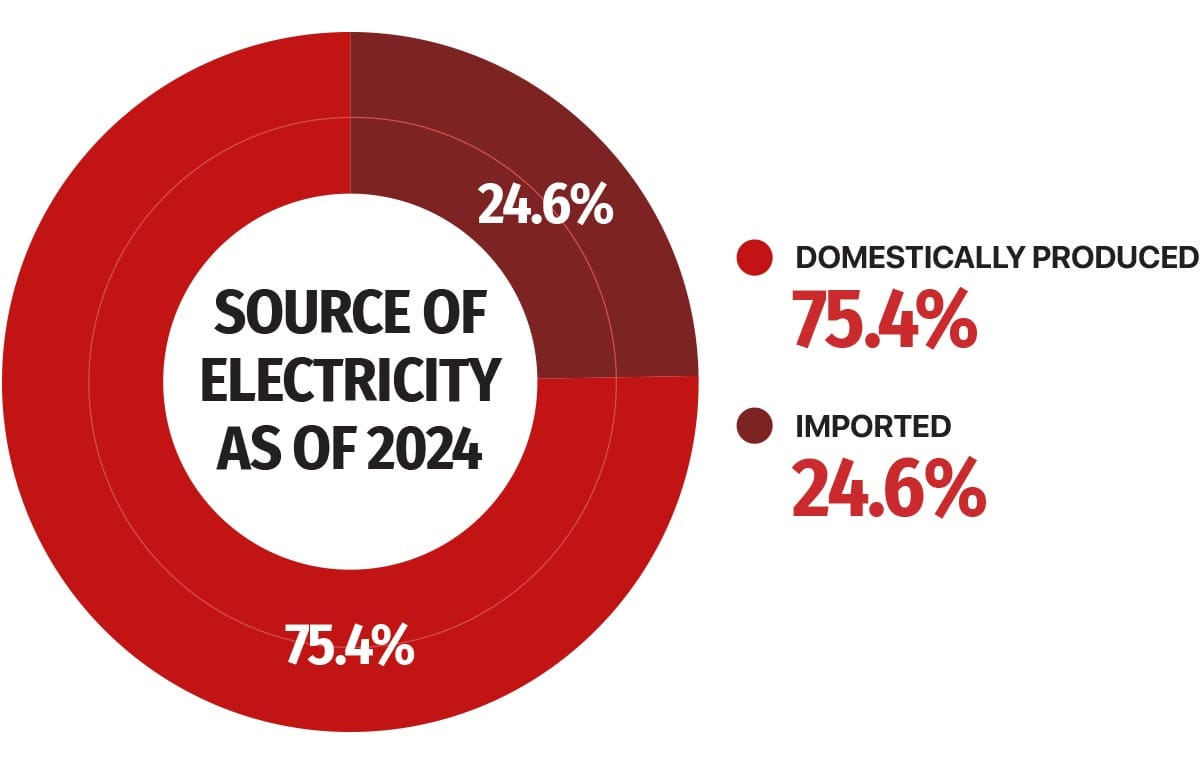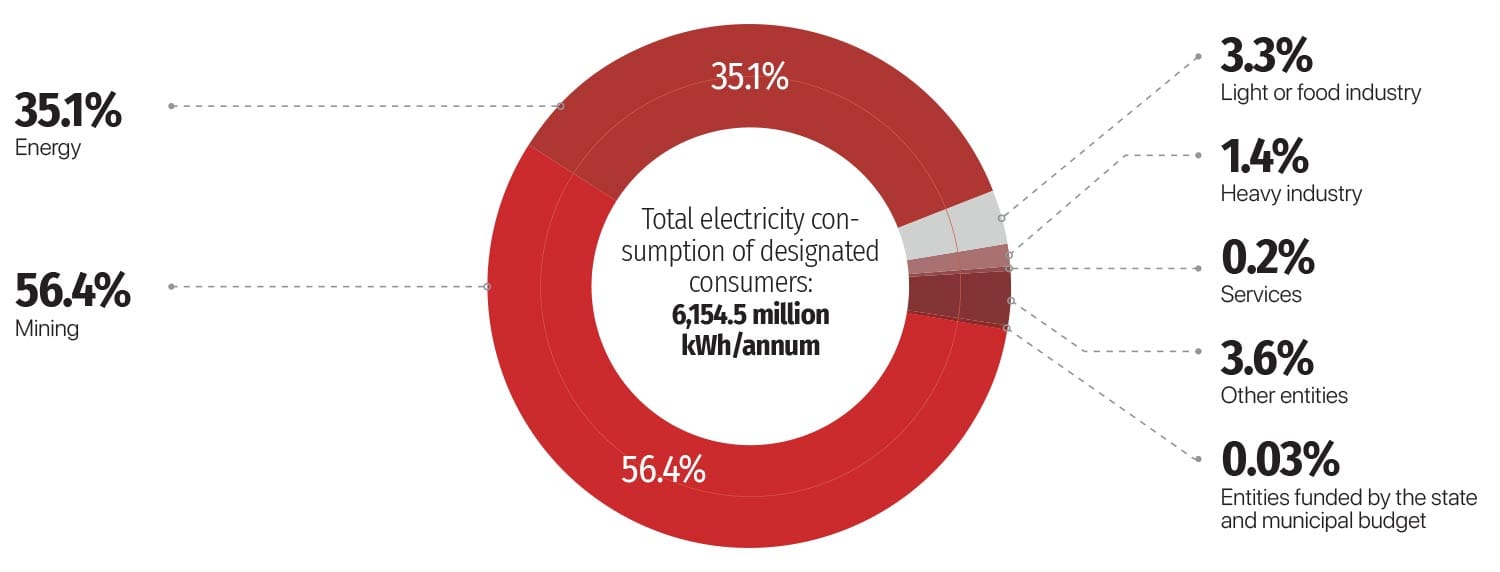Mongolia’s energy sector comprises four independent power systems: Central, Western, Eastern, and Altai-Uliastai, with diesel generators and heat-only boilers used in off-grid areas. The Central Energy System is the largest, supplying electricity to major cities, 13 provinces, and around 150 soum centers.
Mongolia has 8,299 km of power transmission lines, 105 compact substations, 51,927 km of power distribution lines, and 12,294 substations. However, the country cannot fully meet its energy demand with domestic sources and imports electricity from China and Russia to cover the shortfall.
In 2024, Mongolia generated 8.8 billion kWh of electricity and imported 2.9 billion kWh and distributed 11.6 billion kWh. Of the total electricity distributed, 75.4% came from domestic sources, while 24.6% was imported from China and Russia.
Mongolia’s energy demand is driven largely by rapid development of the mining sector, especially in the South Gobi region.
The primary consumer of imported electricity from China is the Oyu Tolgoi copper and gold project in South Gobi region, with an annual energy demand of 2.2 billion kWh. It is reported that approximately $110–120 million is spent annually on importing electricity for the project.
To fully meet its energy needs domestically, Mongolia plans to develop large-scale thermal power plants, hydropower plants, pumped-storage systems, and renewable energy sources such as wind and solar, while increasing installed capacity. The government has outlined significant projects to achieve this goal.
As part of the Government Action Plan for 2024–2028, Mongolia aims to initiate 35 projects with a combined capacity of 5,325 MW for electricity, 1,778 MW for heat, and 5,000 MW for electricity export. These projects are expected to be implemented in phases, with the country’s installed energy capacity projected to increase by 92% within four years.
Electricity Production and Consumption, million kWh
Source: Ministry of Energy
Source: Ministry of Energy
Electricity consumption of designated consumers as of 2024
Source: Energy Regulatory Commission
Energy price
Mongolia has kept energy prices stable for many years without changes to tariffs. However, the selling price has been lower than production costs, causing the energy sector to operate at a loss and rely on government subsidies for years. To address this issue and ensure the sector’s economic independence, electricity tariffs were increased in November 2024, with plans to raise heating tariffs starting in 2026.
In order to encourage households to control and save their energy consumption while keeping the financial burden on households low, a three-tier consumption-based tariff has been introduced in November 2024.
The average household tariff is MNT 143.5, but under the revised tariff, consumption up to the first 150 kWh of the month will be charged at MNT 175, consumption between the next 150-300 kWh at MNT 256, and consumption exceeding 300 kWh at MNT 285.
Also, in order to reduce air pollution, electricity bills for households in ger districts are discounted during winter. Specifically, electricity consumption between 9:00 PM and 6:00 AM for consumers with dual-tariff meters in ger districts is discounted by 50-100%.
Renewable energy
Mongolia has enormous potential for solar, wind, and hydro energy production. The country enjoys more than 260 sunny days per year, meaning that it’s one of the sunniest countries in the world. The country’s combined wind and solar power potential are estimated to be equivalent to 2,600 GW (gigawatts) of installed capacity or 5,457 terawatt-hours of clean electricity generation per year. The amount is enough to meet the country’s energy demand and can meet northeast Asia’s regional energy demand with a suitable transmission infrastructure.
However, as of today, renewable energy sources account for 18.3% of Mongolia’s total installed energy capacity.
Currently, a total of 311 MW of solar, wind, and hydropower plants have been commissioned nationwide. 10 solar power plants with a total capacity of 130 MW, 3 wind power plants with a total capacity of 155 MW and 6 hydropower plants with a total capacity of 26 MW have been supplied to the integrated grid.
In 2023, a total of 8,754.7 million kWh of electricity was generated, with 9.5% or 823.9 million kWh coming from renewable energy sources.
The government target is a share of renewable energy in total installed capacity of 20% by 2023 and 30% by 2030, as announced in the State Policy on Energy, 2015–2030.
The Government’s 2024–2028 Action Plan includes a phased competitive selection process for solar power plants with a total capacity of up to 200 MW and wind power plants with a total capacity of 300 MW. This will be implemented in alignment with the technical capabilities of the energy system and future planning.
Electricity Production from Renewable Energy Sources as of 2024
Source: Energy Regulatory Commission
Changes in the Percentage of Installed Energy Capacity from Renewable Sources
Source: Energy Regulatory Commission





